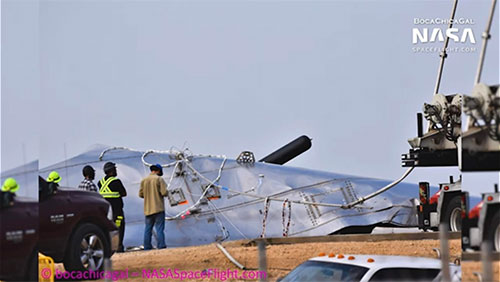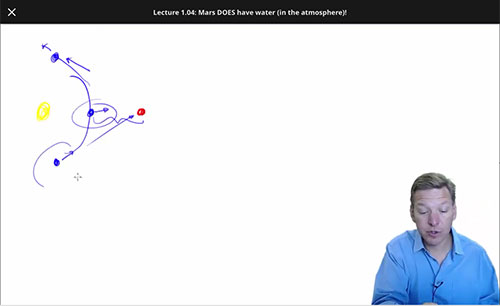Well still keeping a low profile in our burrow, but have been following the SpaceX news and looking at the conjunction of Venus and the Pleiades and learning about taking the temperature of Mars with Mike Brown. Also we can report on more Facebook smart alecs and dealing with sheltering in place.
So, for the next couple of nights Venus appears very close to the Pleiades star cluster. The conjunction was on April 3 but if the clouds stay away we should be able to view the two very close together for a couple of days yet. Check out the screenshot below which shows just how close Venus is right now to the Pleiades. Venus is partially hidden behind the text "Pleiades."
 | |
|
Now I had forgotten all about the conjunction until we received an email alert from the Ventura County Astronomical Society and even a note from the CSULB physics group about the event. So, thanks to all of you that helped remind us.
This DSLR image was taken about 8:00 pm with my DSLR mounted on the lightweight flimsy tripod which I use quite a bit because it is so easy to carry the whole setup outside with just one hand. The only thing is that I have to wait several seconds after making any adjustments, even just turning the focus ring or changing the exposure setting, for the tripod to settle down and stop vibrating. But, it all seemed to capture the conjunction well enough, even though I wished later than the exposure would have been set a bit shorter, maybe say to 1/2 second.
 |
| Conjunction of Venus and The Pleiades, 300 mm, DSLR, 1 second (Source: Palmia Observatory) |
In our previous post we mentioned that the Starship testing at SpaceX facility in Boca Chica, TX, had failed. Today we have some images of the remains of Starship SN#3 which was totally destroyed during cryo-testing of the fuel tanks. Sad! But we understand that the SN#4 fabrication is still going on and the cause of the tank failure will be fixed. The latest news from Boca Chica also seems to say that the engine section of SN#3 can be salvaged and reused. Time will tell and Elon is known for going full speed ahead! Thanks for the photos, @BocaChicaGal!
 |
| Aftermath of cryo-test failure on Starship SN#3 (Source: @BocaChicaGal) |
 |
| Ground crews examine cryo-test failure on Starship SN#3 (Source: @BocaChicaGal) |
In other news, we received a note that the LIGO Observation Run #3 has come to a close. The pandemic has also stopped observing work at the ALMA observatory in Chile too.
 |
| LIGO Observing Session 3 comes to an end (Source: LIGO Consortium) |
I also get meeting announcements from the Mutual UFO Network in Orange County and they have cancelled all of their meetings. I don't know if they will transition to online meetings or not, and I have only attended one of their meetings, but I kind of like their logo of the saucer and the surfer!
 |
| The April meeting has been cancelled (Source: MUFONOC) |
Nonetheless, we can continue with some of our online astronomy classes. How are you all doing in your online use of Coursera and the general relativity class, your structure of the galaxy class and your science of the solar system class?
For me, I found the first part of Mike Brown's Solar System lectures very interesting. Now, I took this part of his class several years back but wanted to summarize this first part where he describe how it is that we can measure the temperature of a planet. His lectures deal with Mars but the principles are the same and can be applied to other planets or the Earth too. As the course progress, we will here much more about what we have learned about Mars with all of the landers and orbiters.
The first principle involved in measuring a planet's temperature is that of blackbody radiation. All bodies above absolute zero emit radiation in accordance with the famous set of blackbody radiation curves. Below, we see Mike Brown with some blackbody curves. Keep in mind that as the temperature of any body goes up the wavelength of the radiation goes down.
 |
| Mike Brown explains how study of planetary temperatures begins with black body radiation (Source: www.coursera.org) |
So, if we can measure the amount of radiation at some given wavelength we are able to identify that measurement with some temperature. When you look at a planet you have to pick a good representative wavelength and be able to back out of your measurements any reflected sunlight from the planet and just measure the blackbody radiation. It is also interesting as you point your telescope at some planet that the temperature measurement is independent of the distance. This happens because the radiation falls off as one over the distance squared but the amount of energy in the received telescope aperture goes up directly with distance squared because it sees a larger area of the planet. It is important that the aperture of the telescope sees only a portion of the planet and does not include any area outside of the planet.
 | |
|
 | |
|
Some of the early measurements of temperature of Martian surface were made back in 1960 by Sinton and Strong, who used the large 100 inch and 200 inch telescopes. They were able to resolve temperature differences across a wide range of Martian latitudes and even at the Martian poles. Mike showed some diagrams from those original papers. Their resolution is shown by the small circle on the Martian sphere.
 | |
|
We know that water and CO2 and other elements have their own distinctive bands of absorption and we can use these bands to detect and measure the amount of them on Mars. But we know that the Earth's atmosphere also contains water and CO2, so how do we tell whether the absorption band comes from those compounds on Earth or on Mars? Well, as Mike Brown explains below, we can use the Doppler shift due to different velocities of Mars during its orbit around the sun. In the screenshot below we can see that for some measurements there will be a redshift and for some measurements they will be blue shifted. The sun is the "yellow" blob and the Earth is in "blue" and Mars is shown in "red." So we can schedule our measurements so that the redshift will enable us to tell the difference between Earth bound CO2 and Martian bound CO2.
 | |
|
In this next screenshot, Mike shows a sketch from the paper by Spinrad in 1963, where the Doppler ship allows us to see the absorption peak for CO2 in the Earth's atmosphere and then for the Doppler shifted peak for CO2 absorption in the Martian atmosphere. By comparing the magnitude of the absorption dip we can tell that the amount of CO2 on Mars is less than in Earth's atmosphere. This is pretty neat! There is some water on Mars but the polar "ice" caps are found to be mostly CO2 ice because the Martian temperature is such as to support CO2 and not much H2O ice. So we see that we can take advantage of many different principles of physics and learn a lot about other planets just by looking at them.
 | |
|
So, if any of this discussion is of any interest to you, be sure to check out and signup for the free Coursera courses on this and other topics.
Ok, if you have had enough of astronomy classes for now, check out what the folks on Facebook are cooking up. David presents the TP hoarder's dream! I guess you can get that delivered from Amazon. Thanks for helping keep us sane, David!
 |
| The TP Hoarder's Dream (Source: Facebook post by David N.) |
Lastly we found a Facebook repost by Cindy covering the effects of eating and being holed up in our burrows. We can't go to the gym and I now for me personally, I find it a lot easier to overeat some of my favorite comfort foods, like pizza, and it is having its effect. I don't know about you, but I keep imagining scenes from the reality TV show, "My 600 lb life", so we have to keep vigilant, yet calm. I hope I don't have to order a rolling pin from our friends at Amazon! Thanks for that post and helping keep us sane, Cindy!
 |
| Can't get to the gym; Do it yourself! (Source: Facebook repost by Cindy) |
Until next time, here from our burrow, stay sane, stay safe,
Resident Astronomer George
Be sure to check out over 400 other blog posts on similar topics
If you are interested in things astronomical or in astrophysics and cosmology
Check out this blog at www.palmiaobservatory.com

No comments:
Post a Comment